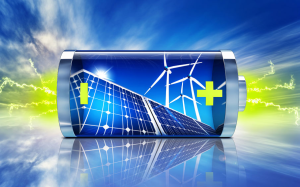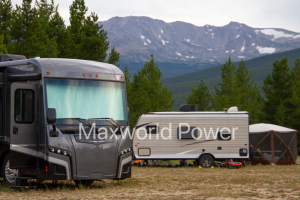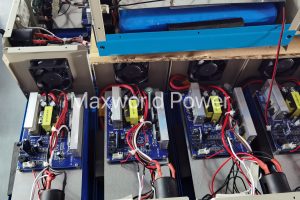Introduction of ESS system
What is ESS system?
Energy storage systems (ESSs) are considered a promising solution for future high renewable penetration power systems. An energy storage system (ESS) is a device that converts electrical energy in a power system into a form that can be stored, so that it can be converted back to electrical energy when needed.
ESS systems are developing a cost-effective, reliable and environmentally friendly all-iron mixed flow battery. A flow battery is an easy-to-charge system that stores electrolytes (energy-providing substances) in an external tank in liquid form. ESS flow battery technology is characterized by its low-cost electrolyte based on the abundant iron on the earth, and its innovative battery hardware design, which greatly improves the power density, makes the battery smaller and lower cost. Creating a high-performance, low-cost storage system will enable widespread adoption of distributed energy storage systems and help bring more renewable energy technologies, such as wind and solar energy, to the grid.
Pros of ESS system:
A. Promote the effective use of intermittent renewable energy
B. Can be combined into an intelligent integrated energy system
C. Reduce the need for additional peak generation capacity
D. Improve grid reliability
E. Performance and cost continue to improve
F. Allow the integration of renewables and fossil fuels
Cons of ESS system:
A. “Round-trip” inefficient energy loss
B. Additional cost and complexity
C. Additional infrastructure and space requirements

The core of ESS: battery system
The core of the ESS system is a battery. This component acts as the device that allows storage of the incoming energy from the power source at any time, and to later discharge as needed.
A battery is an electrochemical component, typically made of lithium ion or lithium iron phosphate technology, that converts incoming electrical energy into chemical energy within its structure during charging. Then, when the load discharges when it needs power, the component converts this chemical energy back into electrical energy in its terminal output.
The battery is always at maximum capacity and takes different times to fully charge, however, for residential and commercial applications it is always of a size that can be charged in a day or two at most.
How do the ESS work?
ESS can work in a number of ways, depending on the mode of operation you choose.
The most traditional way is to work on the basis of self-consumption. In this mode of operation, the power source generates as much electricity as possible, whether solar or wind, which is then consumed instantly by the load, and the excess is sent to the battery through the inverter. This work plan is repeated every day and tries to minimize the amount of power consumed from the grid, while keeping a small amount of energy in the battery as a backup in the event of a power outage. However, depending on the amount of power consumed and the size of the system, you may still need to consume a small amount of energy from the grid.

Alternatives to this scheme are considered when a time of day tariff (TOU) tariff exists in your property. The TOU tariff changes the kWh value of consumption based on the hour of the day. This reflects the oscillating patterns of generation and demand in the grid, as well as price fluctuations in the electricity market. ESS is able to interact in such a complex mechanism by setting the power supply to fully charge the battery within a few hours of low power rates and then discharging it when high power rates activate. This allows you to manage energy flow to achieve higher savings by only consuming from the grid during low power rates and completely avoiding consumption from the grid during high rates. If your battery is already fully charged, you can also see how much power is exported back to the grid during periods of low electricity prices.
Finally, When a power outage occurs in your area, ESS can provide a full backup. The goal here is not to achieve higher savings, but to provide a reliable power system for the number of days ESS can produce when it is fully charged. This is invaluable for off-grid applications in situations where a potential natural disaster is imminent and you need to fully charge your battery, or when you want to live off-grid or have no access to power.
Conclusion:
ESS system helps to use and manage energy efficiently, resulting in lower electricity bills. Depending on the country’s charging system, a variety of solutions can be configured and applied, such as charging batteries with cheap overnight power and reducing electricity costs by reducing peak demand. For large buildings, ESS can be built to reduce peak demand at the plant and reduce electricity bills with charging systems. In addition to large office buildings that consume a lot of electricity, industrial and commercial institutions such as hospitals, schools, factories and gas stations can also benefit from stable power supply and lower costs through ESS.













